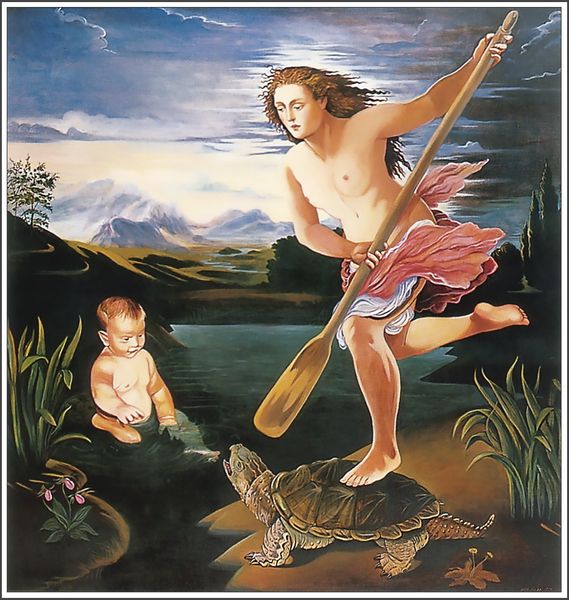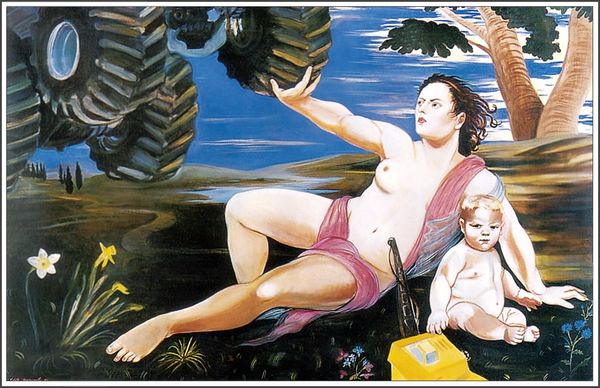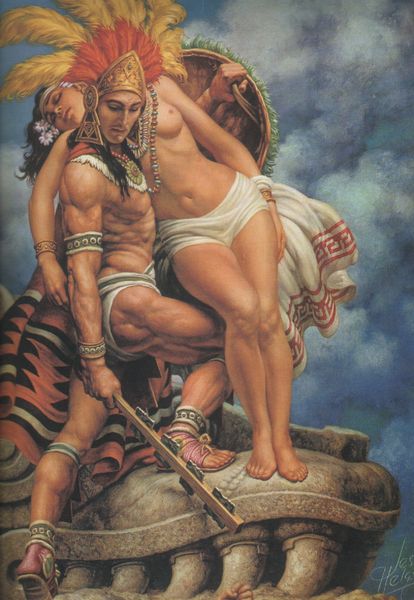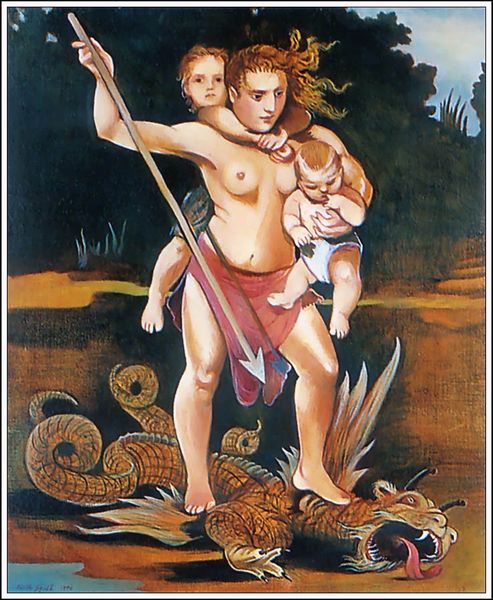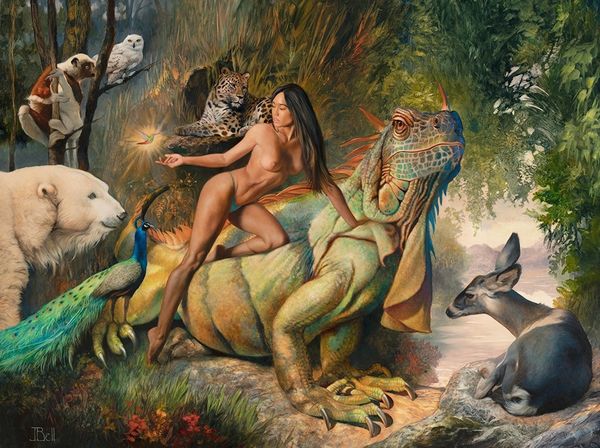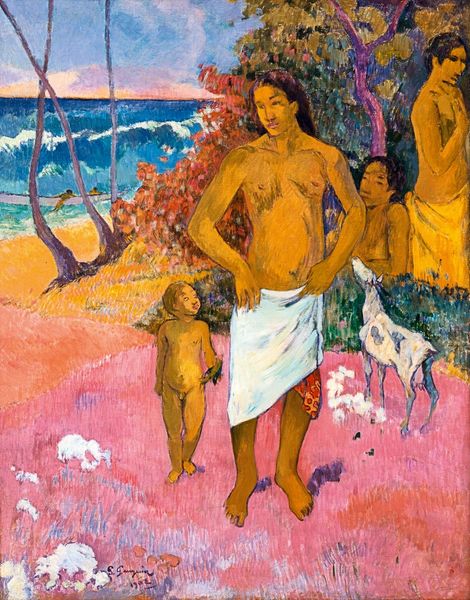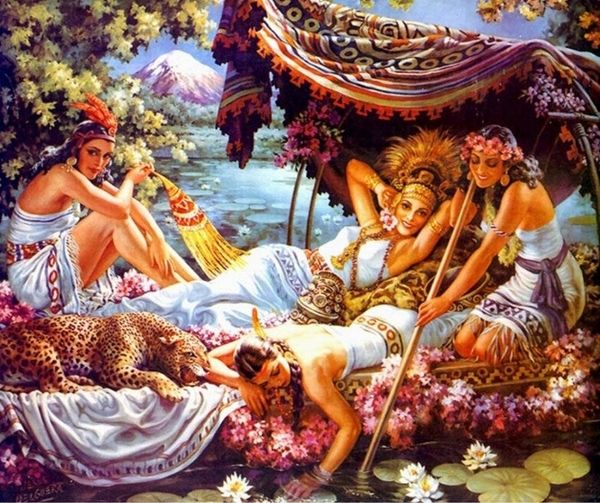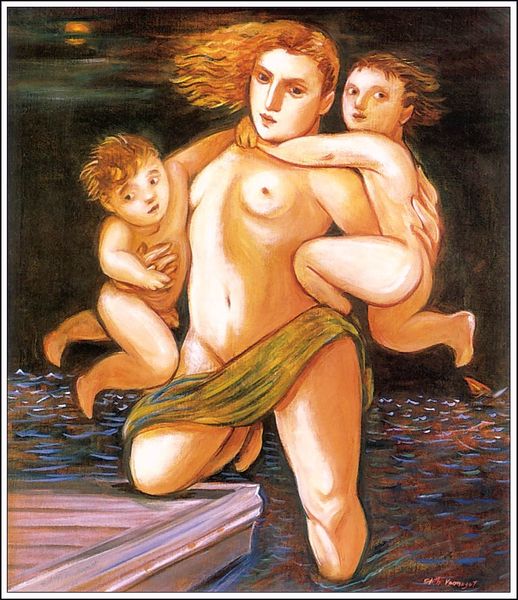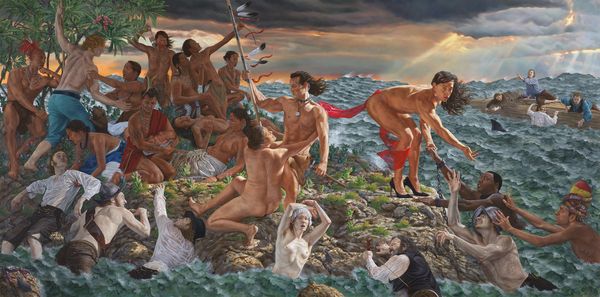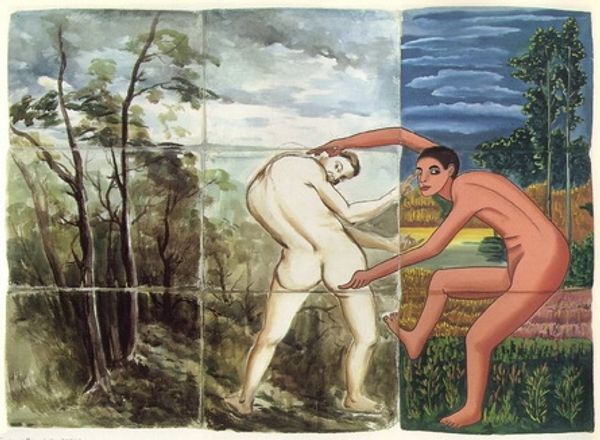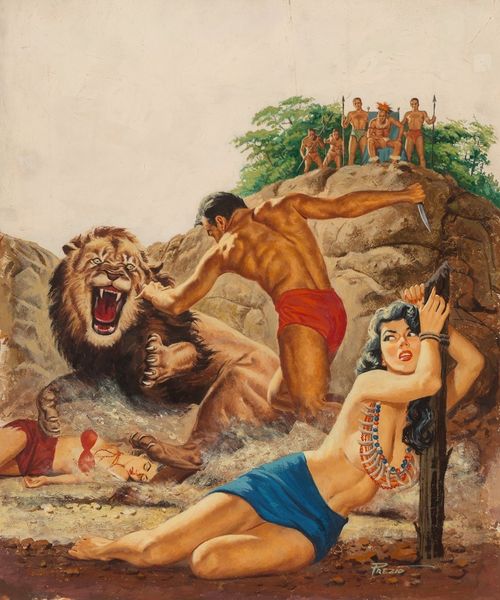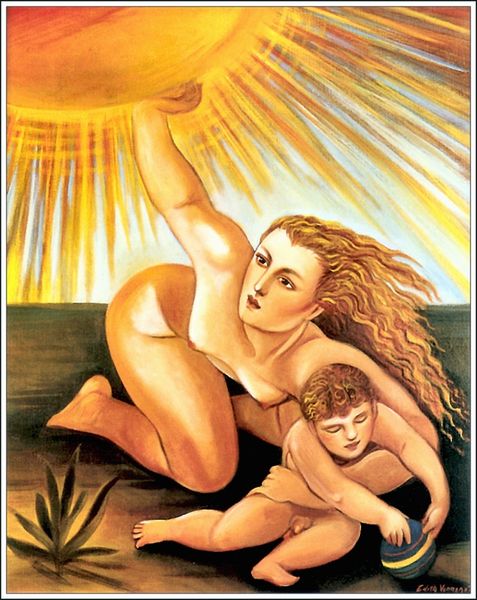
oil-paint
#
oil-paint
#
landscape
#
figuration
#
female-nude
#
child
#
romanticism
#
animal portrait
#
surrealism
#
genre-painting
#
nude
#
surrealism
Copyright: Edith Vonnegut,Fair Use
Editor: So this painting, “Garden Hose” by Edith Vonnegut, is really something. I mean, a nude woman is seemingly strangling a tiger with a garden hose, while a baby watches nearby. The juxtaposition of innocence and, well, potential violence, is quite striking. What do you make of it? Curator: It's certainly provocative, isn't it? It strikes me as a powerful commentary on the societal roles imposed upon women. Consider the title, "Garden Hose"—domestic, commonplace. Yet, the artist places this object within a scene of almost mythological struggle. It's the expectation versus the reality of female experience. Editor: So, the garden hose represents the confines of domesticity? Curator: Precisely. And the tiger, perhaps, is the untamed spirit, the rage or passion that society expects women to suppress. The child could represent the next generation inheriting this complex dynamic. Notice the lighting, how it spotlights the struggle and leaves the background almost dreamlike. What impression does that create for you? Editor: It isolates the figures, intensifies the scene, as if this is a performance witnessed by few, yet crucial for everyone involved. A struggle not necessarily lived openly. Do you see echoes of historical artwork, especially considering the poses? Curator: I think the echoes of romanticism, maybe even some art nouveau influence, serve to heighten the sense of drama while making this incredibly uncomfortable scene, something palatable for an art audience. Is Vonnegut forcing us to confront a complex legacy of beauty that contains brutality? Editor: It's a lot to unpack! Seeing it as a social commentary, as a statement about female identity, gives a completely new and deeper context, I now feel. Curator: Indeed. Art at its best sparks dialogue, forcing us to reconsider our own perspectives. And sometimes… what seems bizarre on the surface offers a much richer analysis in retrospect.
Comments
No comments
Be the first to comment and join the conversation on the ultimate creative platform.
